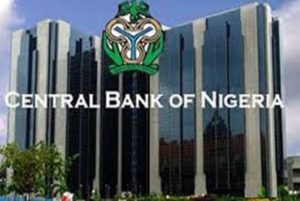A number of African currencies have shown notable strength in recent times, serving as indicators of their countries’ economic resilience, sound fiscal policies, and growing investor confidence.
According to Forbes’ currency calculator, these currencies have maintained strong exchange rates against the U.S. dollar, reflecting robust macroeconomic fundamentals, diversified economies, and strategic monetary management.
These rankings reflect currency strength relative to the U.S. dollar, based on economic policies, trade balances, and monetary measures in these countries as of September 2025.
The top four currencies stand out for their particularly strong exchange rates against the U.S. dollar, underlining their relative stability and economic strength.
Several others on the list benefit from being pegged to more stable foreign currencies or supported by key economic drivers such as natural resources, consistent trade surpluses, or effective governance — all of which contribute to their sustained strength.
Below are the top 10 best-performing African currencies, ranked by their current exchange rate to the U.S. dollar:
1. Tunisia – Tunisian Dinar (TND)
Exchange Rate: ~2.92 TND per US dollar
Tunisia maintains one of the most stable currencies in Africa, thanks to tight foreign exchange controls, moderate inflation, and consistent support from international lenders. Its diversified economy—particularly in tourism, agriculture, and manufacturing—has helped sustain the dinar’s relative value.
2. Libya – Libyan Dinar (LYD)
Exchange Rate: ~5.41 LYD per US dollar
Despite political instability, Libya’s currency remains strong due to massive oil exports, a controlled exchange regime, and limited currency circulation. The Central Bank of Libya maintains strict control over currency flows, bolstering the dinar’s strength.
3. Morocco – Moroccan Dirham (MAD)
Exchange Rate: ~9.08 MAD per US dollar
The dirham benefits from Morocco’s diversified economy, strong trade ties with Europe, and a flexible exchange rate regime. Continued foreign investment in renewable energy, automotive, and agriculture also supports currency stability.
4. Ghana – Ghanaian Cedi (GHS)
Exchange Rate: ~12.40 GHS per US dollar
Ghana’s currency strength is linked to recent debt restructuring, a growing digital economy, and strong cocoa and gold exports. The central bank’s aggressive monetary policies have also helped rein in inflation and stabilize the cedi.
READ ALSO: CBN Bans Foreign Currencies As Collateral For Naira Loans
5. Botswana – Botswanan Pula (BWP)
Exchange Rate: ~14.09 BWP per US dollar (approximate)
The pula remains strong due to Botswana’s political stability, low corruption levels, and prudent macroeconomic management. A well-regulated diamond export sector and foreign reserve buffers have helped support the currency.
6. Seychelles – Seychellois Rupee (SCR)
Exchange Rate: ~14.84 SCR per US dollar (approximate)
A small but high-income island nation, Seychelles enjoys a robust tourism sector, tight monetary policy, and a relatively high per capita income. The rupee has remained steady through disciplined economic reforms and debt control.
7. Eritrea – Eritrean Nakfa (ERN)
Exchange Rate: ~15.00 ERN per US dollar (fixed)
The Nakfa is pegged to the U.S. dollar at a fixed rate, supported by strict capital controls and a cash-based economy. While it may not reflect market dynamics, the fixed exchange rate contributes to a stable nominal value.
8. South Africa – South African Rand (ZAR)
Exchange Rate: ~17.27 ZAR per US dollar
The rand remains one of the most widely traded African currencies. Despite volatility, it’s backed by a large, diversified economy, deep financial markets, and a relatively independent central bank with active monetary policy tools.
9. Eswatini – Swazi Lilangeni (SZL)
Exchange Rate: ~17.28 SZL per US dollar (approximate)
The lilangeni is pegged at par to the South African rand and benefits from Eswatini’s membership in the Common Monetary Area (CMA). The country’s close economic integration with South Africa helps anchor its currency’s value.
10. Namibia – Namibian Dollar (NAD)
Exchange Rate: ~17.28 NAD per US dollar
Like Eswatini, Namibia’s currency is pegged 1:1 to the South African rand, allowing it to maintain stability through the Common Monetary Area. Namibia also benefits from resource exports, especially uranium and diamonds.





